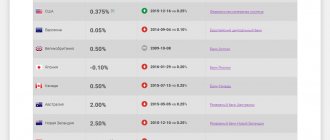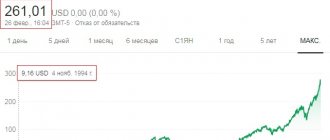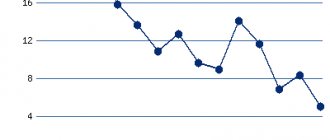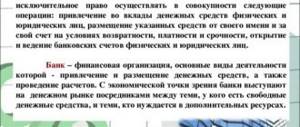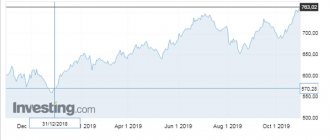Almost everyone has encountered the work of commercial banks. They issue loans, accept deposits and process payments. Against their background, the mega-regulator of financial markets in Russia, the Central Bank of the Russian Federation, looks like a “dark horse”, and its activities seem opaque. On the one hand, this is an independent organization that is not a government body, and on the other hand, its goals and functions clearly indicate that it belongs to the structures of the federal government bodies of the Russian Federation. It is not state-owned and at the same time not commercial.
What kind of organization is this, and what is its role in the Russian financial system? In this article we will answer these questions in simple words and pay attention to the dual legal status of this organization.
Regulations on the Central Bank of Russia and its functions
In its work, the Central Bank of the Russian Federation relies on the Constitution of the Russian Federation, the Federal Law “On the Central Bank of the Russian Federation (Bank of Russia)”, and other laws of the Russian Federation that mention the role of the Central Bank. So,
1. Article 75 of the Russian Constitution defines two main functions of the Central Bank of Russia:
— issue of Russian currency, which is the exclusive prerogative of the Bank of Russia;
— the main task of the Bank of Russia is to ensure the protection and stability of the ruble.
2. Other important tasks of the Bank of Russia are set out in the Federal Law “On the Central Bank of the Russian Federation (Bank of Russia)”, namely
- develop and implement monetary policy, develop and ensure stability of the financial market;
- act as a lender of last resort, refinancing banks and other credit institutions of the Russian Federation;
- approve the standards and rules of banking operations and all monetary payments on the territory of the Russian Federation;
- carry out the accumulation and management of Russian gold and foreign exchange reserves;
- carry out supervision of banks, credit institutions, MFOs (microfinance organizations), insurance companies, pawnshops, housing and credit cooperatives;
- regulate the activities of payment systems;
- establish the official ruble exchange rate and currency regulation on the territory of the Russian Federation
The emergence of the term “Central Bank”
At the dawn of the 19th century, financier Thomas Joplin, in his publications criticizing the monopoly of the Bank of England, first used the word “Central Bank”, referring to the central offices of credit institutions with many branches.
Throughout the 19th century, banks in large cities with a branch network outside their borders were called “central”. The meaning of the word "Central Bank" was that it belonged to a large urban center. Later, this began to be called the largest banking institution within the borders of a province, region, state or entire country. Examples include the Central Bank of Liverpool, the Central Bank of Scotland and the Central Bank of Canada. In the capital of the Russian Empire, St. Petersburg, the “Central Bank of Russian Land Credit” was established in 1873.
As a rule, the central bank of the city was assigned the exclusive right to issue banknotes, and it turned into a monopoly issuing structure for a given section of the market, which extended to the surrounding region. For example, Bank of England banknotes were circulated in London itself and in the surrounding areas. That is, the Central Bank performed all the functions of a regular banking institution and additionally had the right to issue money.
The Central Bank of Russia as the financial regulator of the Russian Federation
The Central Bank of Russia checks all securities of the St. Petersburg and Moscow MOEX exchanges (shares, bonds, bills, derivatives, depositary receipts, warrants, listing of financial instruments on the exchange, capitalization of companies - market participants (market makers, brokers, investment companies, investment funds, pension funds, etc.).
Registers all types of securities issues (shares, etc.) and checks their issuers in order to prevent financial fraud in the stock, futures, foreign exchange and commodity markets of the Russian Federation.
Main and related tasks of the Central Bank
Related tasks of the central bank include:
- Ensuring price stability.
- Achieving balanced economic growth.
- Maintaining stability of exchange rates.
- Ensuring financial stability in the country.
The main strategic task of the Central Bank is determined by the constitution and legislation. It must be known to the public. Most often, the main strategic goal of an activity is rarely subject to revision and may not be changed for decades.
External debt of the Russian Federation
Russia's external debt as of January 1, 2021 is $453.75 billion (26th place in the world). For example, in the USA (1st place in terms of external debt) this figure exceeds $22 trillion!
Russia's external debt is equal to 36% of its GDP, and this is a very good indicator. Economists determine the safe level to be 60%. For example, the external debt of the United States and the European Union exceeds 100% of GDP, Japan – 261% of GDP, the Netherlands – 700% of GDP.
Structure of Russia’s external debt (basic as of May 1, 2019):
— $51.14 billion – public external debt, including accepted obligations of the former USSR;
— $38.5 billion – debt on external bond loans;
— $11.587 billion – government guarantees in foreign currency.
Credit function of banks
Another important component of modern banking is the provision of loans to individuals and legal entities. The credit function of banks is that by providing loan funds to borrowers, the organization thereby creates the so-called mass of credit money. At the same time, their main feature is that such monetary resources do not have physical expression - that is, they do not exist in real “tangible” form, but in the form of entries in accounts. Such a mechanism is controlled and regulated by the Central Bank using a number of legislative standards.
Revocation of licenses by the Bank of Russia
If violations or non-compliance with the terms of the license are detected, the Bank of Russia has the right to temporarily suspend the activities of a financial market participant or revoke its license. In December 2021, the regulator significantly reduced the number of forex dealer license holders - out of 9 permit holders, only 4 remained. Licenses were revoked from: Alpari Forex, Teletrade Group, TrustForex, Fix Trade, Forex Club .
Left: VTB Capital Forex, PSB Forex, Finam Forex, Alfa-Forex.
Reasons for the creation of the Central Bank of the Russian Federation.
The creation of a single bank in the country was facilitated by the need for the emergence of a main institution for:
- Carrying out emission policy.
- Implementation of the relationship between the banking system and the state government system.
- Regulation of the work of all financial institutions in the country.
- Coordination and management of the entire credit network.
- Monitoring the activities of banks, checking, issuing and revoking licenses for banking operations.
- Protecting the exchange rate and stability of national money - rubles.
- Further development of the banking segment and the entire financial industry of the country.
Central Bank Management and Chairman of the Bank of Russia
The Central Bank of the Russian Federation has 2 main governing bodies - executive and supervisory and control:
1. Board of Directors of the Central Bank of the Russian Federation:
- Chairman of the Bank of Russia (approved by the State Duma of the Russian Federation on the proposal of the President of the Russian Federation). Since October 18, 2013 Nabiullina Elvira Sakhipzadovna;
— 14 members of the board of directors (approved by the State Duma of the Russian Federation on the proposal of the chairman of the Bank of Russia).
2. National Financial Council:
— three deputies of the State Duma of the Russian Federation, the same number of representatives of the President of the Russian Federation and the Government of the Russian Federation;
— two members of the Federation Council of the Russian Federation;
- Head of the Bank of Russia.
Concept of the Central Bank
The Central Bank of the Russian Federation is a body whose main task is to ensure the stability of the ruble and prices, as well as to create comfortable conditions so that the country’s economy does not experience a crisis, but develops steadily.
In addition to the main name, the institution has other names - Bank of Russia, Central Bank, Central Bank. The body is endowed with a special legal status, functions and powers, so it is incorrect to equate it with ordinary financial companies. The Central Bank dominates all credit and non-credit organizations.
The activities of the Bank of Russia are regulated by the Constitution of the Russian Federation and the corresponding legislative document. The authorized capital of the institution is approximately 3,000,000,000 rubles.
Money, like the company’s property, is federal property, but the Central Bank has the right to use and dispose of it within the framework of current legislation. At the same time, other companies cannot gain access to money and property without approval from the main Bank of the country.
The tasks of the Central Bank do not include making a profit. The maintenance of the institution and employees is carried out through self-sufficiency. 75% of revenues are transferred to the country's budget.
The Central Bank is an unusual institution, which, from a legal point of view, has many contradictions. On the one hand, it is a state body, and on the other, it is not subordinate to the authorities of the Russian Federation. Such procedures were established in 1990 and have not yet lost their relevance.
The Central Bank does not have any form in the Civil Code. The institution is outside civil law jurisdiction. It is not subject to any authority, but it is not itself a state structure.
In addition, the Central Bank does not pay the country’s loans. If a crisis occurs, he will not have the opportunity to obtain a loan from a bank or use internal reserves. However, the institution calmly lends funds to other states.
Another illogicality of the institution is that the Central Bank must comply with the rules of the IMF. It is he who prohibits the body from lending funds to its country to repay other loans. In addition, according to these rules, the Central Bank does not have the ability to print and mint more money than the state received on the international market from the sale of goods, works and services.
Other financial regulators of the world
Government regulators of other countries: NFA, CFTC and SEC (USA), FCA (UK), FINMA (Switzerland), CySEC (Cyprus), FSC Mauritius (Malta), BaFin (Germany), CSRC (China), SEBI (India), FSCL (New Zealand), Botswana IFSC (Botswana), in the European Union - MiFID, ASIC (Australia), IFSC (Belize) requirements.
Public organizations: KROUFR and RAUFR.
Sincerely, wiki Masterforex-V, free (school) and professional training courses Masterforex-V for working on Forex, stock, commodity and cryptocurrency exchanges.
Functions performed by the bank
The whole variety of functions performed by the bank can be briefly formulated in three points.
- Accumulation of funds. At the same time, you need to understand that if some financial structures (for example, investment funds) accumulate money for further investment, then banking companies attract and accumulate such resources for their own purposes.
- Regulation of money circulation in the state. A banking company can be called a kind of center that processes payment transactions between entities (clients).
- Mediation, which traditionally refers to the direct activity of an intermediary in transfers, payments and any other types of settlements.
What is the key rate and how does it affect the economy
The key rate exists throughout the world and serves to regulate interest on loans, profitability of deposits, influence on the exchange rate of the national currency and inflation. Determining this important indicator is the prerogative of the Central Bank. Many of us are accustomed to the name “Refinancing Rate”, but from January 1, 2021 it was combined with the key rate. Its value reflects the cost of loans with which the central bank refinances commercial banks.
Bank lending occurs through a special type of auction - repo. Cash liquidity is distributed on a competitive basis secured by securities in the form of bills, bonds and depositary receipts issued by banks. Thus, loans with guarantee collateral are distributed at the auction. This allows the banking system to be filled with monetary liquidity. If there are free funds on the balance sheet of banks, the Central Bank attracts them to its deposit. From these operations, the Central Bank generates interest income, which partially goes to the maintenance of the regulator, but most of it goes to the treasury. In this way, the Central Bank influences the volume of money supply in the economy. The value of the key rate largely determines the level of inflation and the rate of economic growth.
One of the main consequences of changes in the key rate for commercial banks and their clients is the return on deposits, the cost of consumer and mortgage loans, as well as business financing opportunities. The key rate is currently trending towards a gradual decline. The decision to change the rate is made at a meeting of the Board of Directors of the Central Bank, as a rule, 3-5 times a year in increments of 0.25-0.5 percentage points. The expected level of the key rate at the end of 2021 is from 6 to 6.5% per annum. You can check the Central Bank rate for today on the main page of the official website www.cbr.ru.
Central Bank key rate on the website
Why can’t the key rate be lowered by several points at once, thereby providing the economy and population with cheap loans? According to the idea of the authors of such proposals, this will stimulate economic growth through the development of domestic business and consumer demand from the population. The Central Bank takes a moderate position on this issue and follows a balanced approach. Over the past few years, the Russian economy has experienced a pattern more than once: a sharp and unjustified reduction in the rate is fraught with a collapse of the ruble exchange rate. At the same time, lowering the rate does not necessarily lead to an automatic reduction in the cost of bank loans.
Commercial banks always factor into the cost of lending the risks associated with non-repayment of loans. If the economic situation in the country is unstable, the level of income of the population is declining, and favorable conditions have not been created for business, banks will not issue cheap loans at a loss.
Let's determine what practical benefit the reader can derive from monitoring changes in the Central Bank key rate.
- First of all, you can predict the direction in which the ruble exchange rate will go. The more the key rate of the Central Bank of the Russian Federation decreases, the better for the ruble exchange rate and vice versa. If you are insuring your savings against depreciation, you should plan for currency diversification according to the principle of “don’t put all your eggs in one basket.” Everyone remembers how at the end of 2014 - beginning of 2015 the dollar exchange rate almost doubled.
- An increase in the key rate, especially if it happens sharply, creates bad conditions for the banking business, as well as for all Russian companies focused on the domestic market and ruble demand of the population. Raising the rate is a forced measure designed to reduce the risk of high inflation. This makes currency speculation unprofitable, when banks and private investors borrow rubles and exchange them for foreign currency.
Functions of a bank in the economy
All processes associated with the accumulation and movement of money are of utmost importance for the economic system of the state. However, the functions of a bank in the economy are not limited to accumulation and redistribution. In addition to them, such companies also stimulate financial savings in the economic sphere, which directly affects the state of the country’s economy. An equally significant component can be called the securities market (stock market), which is also closely related to banking activities of intermediation in transactions carried out with shares, bonds and other securities.
Results of the banking sector
The profit of all credit institutions in the country increased fivefold in 2021: from 192 billion rubles to 929 billion rubles. The balance of reserves increased by three and a half percent over the year (to RUB 1,352 billion). The volume of borrowings from the Central Bank decreased by half, the volume of Treasury deposits decreased by one and a half times, the share of funds attracted from the Central Bank in liabilities decreased to 3.4 percent, and from the Treasury - to 0.4%.
In December 2021, Russian banks made a profit of 141 billion rubles. (in December 2015, a loss of 72 billion rubles was recorded). The balance of reserves for losses decreased by 4.7%, while in 2015 there was an increase in reserves of four and a half percent. Overdue debt on corporate loans decreased by 8.9%, and on retail loans by 0.7%. In 2015, overdue debt on corporate loans did not change over the year (6.3%), while on retail loans it decreased to 7.9%. To obtain more reliable information about the financial condition of borrowers, by the end of 2017 the Central Bank plans to create a register of collateral for loans. This will allow us to monitor and prevent the emergence of the main problem of the banking system - issuing loans to borrowers who cannot provide high-quality collateral.
What is a commercial bank
Modern commercial banks today are directly engaged in servicing all types of enterprises, as well as the civilian population. Regardless of the form of ownership, commercial banks represent a separate entity of the country's economy.
The relationship between the bank and the client is of a business and commercial nature. The priority goal of a commercial bank is to obtain the highest possible monetary profit. A commercial bank is the main mechanism of the state's banking structure.
A commercial bank is an enterprise that organizes the movement of capital for loans in order to obtain a commercial profit.
Problems of the Russian banking system
- insufficient level of bank capital
- large volume of non-repayable loans
- high dependence of banks on the state of state and local budgets
- insufficient level of development of promising banking technologies
- high dependence of banks on large shareholders
- insufficiently high professional level of bank employees
- lack of current legislation for stricter control over the activities of banks, etc.
Material prepared by: Melnikova Vera Aleksandrovna
Money-credit policy
The main goal of the monetary policy pursued by the Central Bank is to ensure inflation within 4%. This figure is fixed in the draft policy for 2021 - 2021. And the main tool to achieve this goal is regulation of the key rate.
In addition to rate regulation, there are a number of other instruments. For example:
- setting limits on the reserves of commercial banks,
- currency interventions,
- bond issue,
- regulation of the money supply in the country.
It should be borne in mind that the impact of this policy on the economy as a whole and the well-being of the individual citizen is long-term in nature and cannot manifest itself here and now. Therefore, to develop truly effective tools, the Central Bank makes forecasts and assesses risks.
